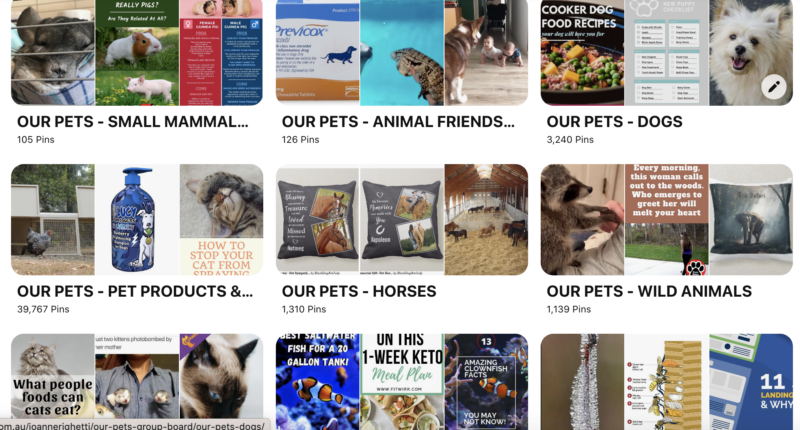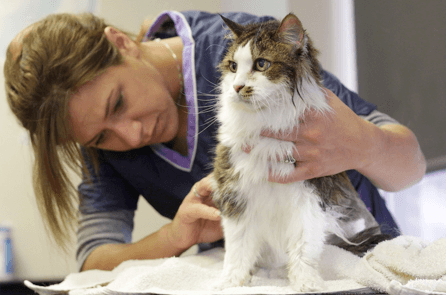IT’S ALL IN THE GROOMING: WHY PETS GROOM THEMSELVES AND TIPS FOR PETS THAT HATE BEING GROOMED
It’s all in the grooming: Why pets groom themselves
(Scroll down for tips on grooming the pet who hates bring groomed.)
Do you groom your pet? Or are you a little lazy (like me!) and choose pets that don’t need a lot of hair care? Better still if they groom themselves! Why pets groom themselves…

Did you groom yourself today? Did you brush your hair or wash it? Perhaps you combed your eyebrows! Had a shower?
The function of grooming
This is the way we humans groom and many animals also groom themselves. The function of grooming is thought primarily to be cleaning of the outer surface of the body including the skin, hair, feathers or scales. Grooming may, however, be equally important as a parasite removal tool, a display behaviour and a social behaviour.
Caring of the body surface is important because it functions as a temperature regulator, a sense organ, a protective device and a moisture barrier.
Grooming methods
Animals differ in their methods of grooming. Mammals tend to lick themselves, use our teeth to nibble and/or use their forepaws or, in the case of primates, their dextrous hands, to rub and manipulate their hair. Our companion animals may spend a large amount of time in self grooming.
Cats are known for their fastidious attention to self-grooming. Birds use their bills to realign feathers, a behaviour known as preening. Did you know that insects also groom? They rub their antennae to keep them clean.
Another reason why pets groom can be an increased parasite load, which may interfere with the body’s ability to function healthily. Grooming can remove fleas and other nasty bloodsuckers. Licking the body surface may help keep animals cool.
Mutual grooming
Social or mutual grooming is found amongst many species of animals and is also known as allogrooming. Commonly it is observed between mother and young and is necessary for the cleaning of juvenile animals who may not yet be able to toilet or self-groom. Cats that are familiar with one another or related are more likely to groom one another. Horses also groom one another.

Some scientists believe that grooming may have been the precursor – that’s what came before – language. Difficult to groom one another when you live in big groups. Better to develop another form of communication that strokes and prods – talking! In both grooming and speech, endorphins are released, which make us feel relaxed.
Grooming problems
There are downsides to grooming pets’ behaviour though. Some animals groom excessively due to anxiety or boredom. It can also be difficult for some owners to groom their pets –they hate it! There is now a complete industry in animal grooming with specialised groomers and grooming services where our companion animals can be dropped off or visited by mobile services.

Grooming as a social or sexual signal
Grooming, however, is not all about keeping clean. Yes, even grooming involves sex! Animals groom themselves as a social signal to the opposite sex.. Small male rodents groom, not only to keep their fur clean but also to attract females. The longer a male grooms himself the more interest a female shows, thought to be due to the odours that the males emitted.
In some birds a ritualized show of grooming is often part of a male’s courtship display, a bright and healthy coat signifying an individual worth mating. In chimpanzees too, male chimps groom one another more when females are present.
We humans are no exception. A flick of the hair, signifies I’m interested in you. Look at me! Another examples of how we are no different to wild animals!
5 Ways to Keep Dogs Calm While Grooming
Tips on Grooming When Your Pet Hates Being Groomed
Do you have a pet who hates being groomed?
Some cats and dogs hate being groomed, some put up with it and some really seem to enjoy it. Here’s a few tips on grooming to help the former become the latter:
- Try getting grooming tools out regularly and just have them sitting around your lounge room or other areas your cat or dog frequents where they are relaxed. Let them see the brush and, if they behaves calmly, reward with praise, treats, a favourite toy or a pat. Leave the grooming for a week.
- When your cat or dog can tolerate the presence of the grooming brush, gradually bring it closer to them. Have it sitting on your lap when you give your pet attention and let them sniff the brush. When they do, without showing fear, praise them. Touch them all over with your hands and repeat this every day.
- After a few days with no reaction to the brush, you can begin to brush your pet, very gently and only for a very short period. Again rewards should be given for calm behaviour.
- Over time, build up the grooming time and your dog should accept that this is a positive interactive experience with you.
- Some pets calm down significantly when given some Rescue Remedy (a Bach flower remedy; just put some drops in their mouth before you produce the brush) or have some lavender in the air. It is also important that you also remain calm and don’t attempt to go at too fast a pace for your pet.
- If your pet still hates being groomed and is constantly hiding or showing fear to the brush, it might be worth buying a new one or leaving the grooming to a professional for a couple of months to break this association.

About the author
Dr Jo Righetti is not a fan of grooming but knows it is essential for pets. Jo lives at home with a dog and several cats, who all enjoy being groomed. More about JO and Pet Problems Solved here.
Follow us on Pinterest for fabulous pet pins or post your own pet photos on our group board OUR PETS








4 comments
Comments are closed.